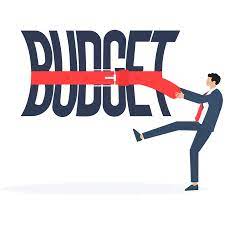Introduction
In an ever-changing world, economic hardship can affect individuals and families from all walks of life. Whether it’s due to unexpected job losses, mounting bills, or sudden emergencies, facing financial challenges is an unwelcome reality for many. However, it’s essential to remember that economic adversity doesn’t have to be a permanent setback. With the right strategies and a determined mindset, you can overcome economic hardship and regain financial stability.
1. Assess Your Financial Situation
The first step in overcoming economic hardship is to assess your financial situation honestly. Take a closer look at your income, expenses, debts, and savings. Use this information to create a clear picture of your financial standing. This step is crucial, as it helps you identify areas that require attention and allows you to set achievable goals.
2. Create a Realistic Budget
Creating a budget is a fundamental part of financial recovery. A well-defined budget will help you allocate your resources wisely and make informed spending decisions. Start by listing your essential expenses, such as housing, utilities, groceries, and debt payments. Then, determine areas where you can cut back without compromising your basic needs.
3. Build an Emergency Fund
One of the most effective ways to prepare for economic hardships is by building an emergency fund. Even small, consistent contributions to a savings account can accumulate over time, providing a financial safety net when unexpected expenses arise. Your emergency fund can prevent you from relying on credit cards or loans during challenging times.
4. Tackle High-Interest Debt
High-interest debt, such as credit card balances, can be a significant financial burden. Devise a debt repayment strategy that focuses on paying off high-interest debts first. Consider consolidating loans or negotiating lower interest rates to reduce the financial strain caused by interest payments.
5. Generate Additional Income
Exploring opportunities to supplement your income can significantly ease financial hardships. Consider part-time work, freelancing, or taking on a side hustle. The gig economy offers a variety of options to leverage your skills and generate extra money.
6. Invest in Financial Education
Financial literacy is a powerful tool in navigating economic challenges. Invest time in learning about personal finance, investments, and wealth-building strategies. Consider taking online courses or reading books that expand your financial knowledge.
7. Cut Unnecessary Expenses
Review your daily spending habits and identify areas where you can cut back. This could involve dining out less, cancelling unused subscriptions, or finding cost-effective alternatives. Practising frugal living and expense reduction can free up funds for more critical expenses.
8. Seek Assistance When Needed
In times of economic hardship, remember that there is no shame in seeking assistance. Explore government assistance programs, local charities, and community support services that can provide temporary relief or guidance.
In conclusion, while economic hardship can be daunting, it is not insurmountable. By assessing your financial situation, creating a realistic budget, building an emergency fund, tackling debt, generating additional income, investing in financial education, cutting unnecessary expenses, and seeking assistance when needed, you can take substantial steps toward financial recovery. With determination and perseverance, you can navigate financial hardships and secure a brighter financial future. Remember that, with the right strategies, you can make a comeback from economic adversity.
Read Also: Healthy Morning Routine Tips



